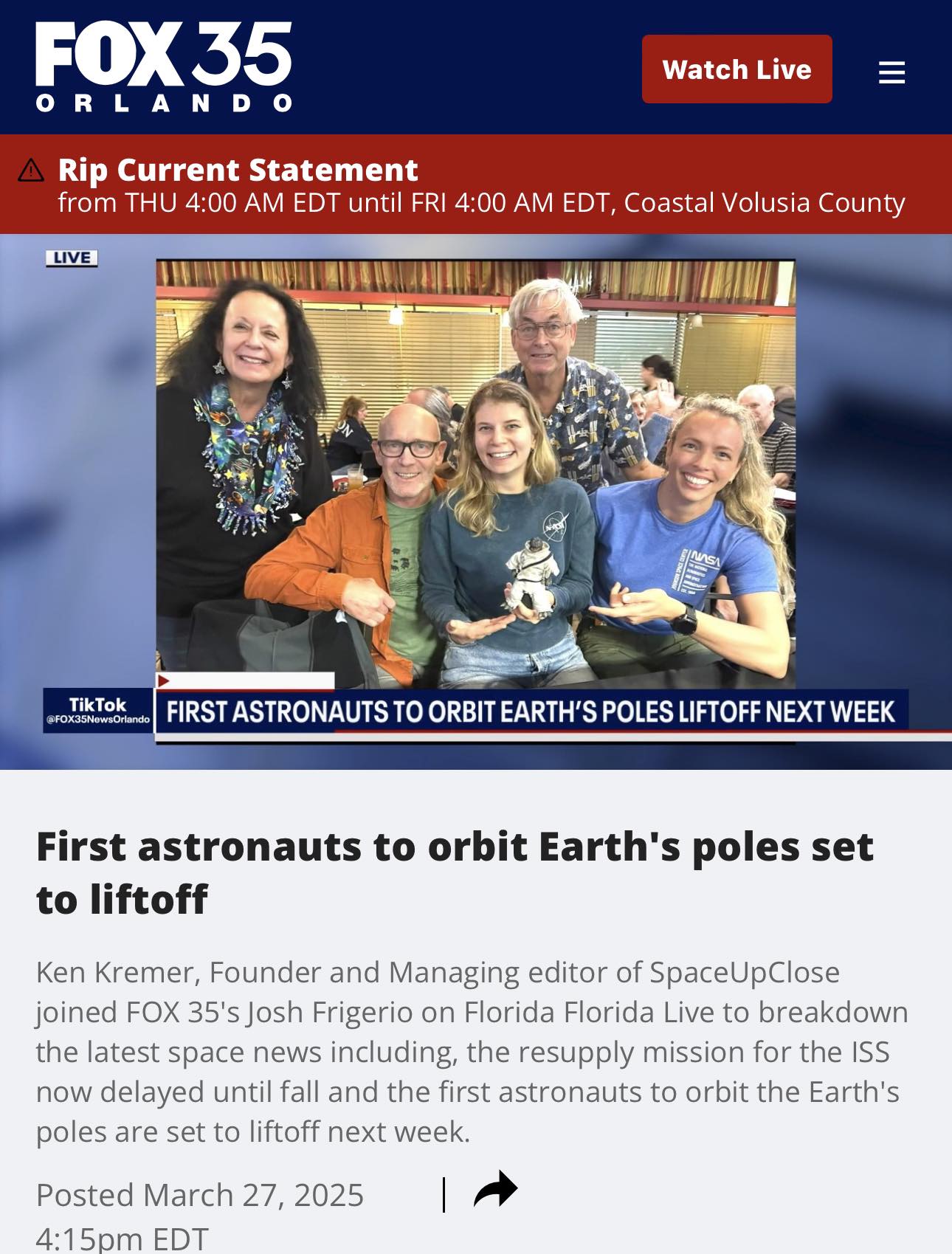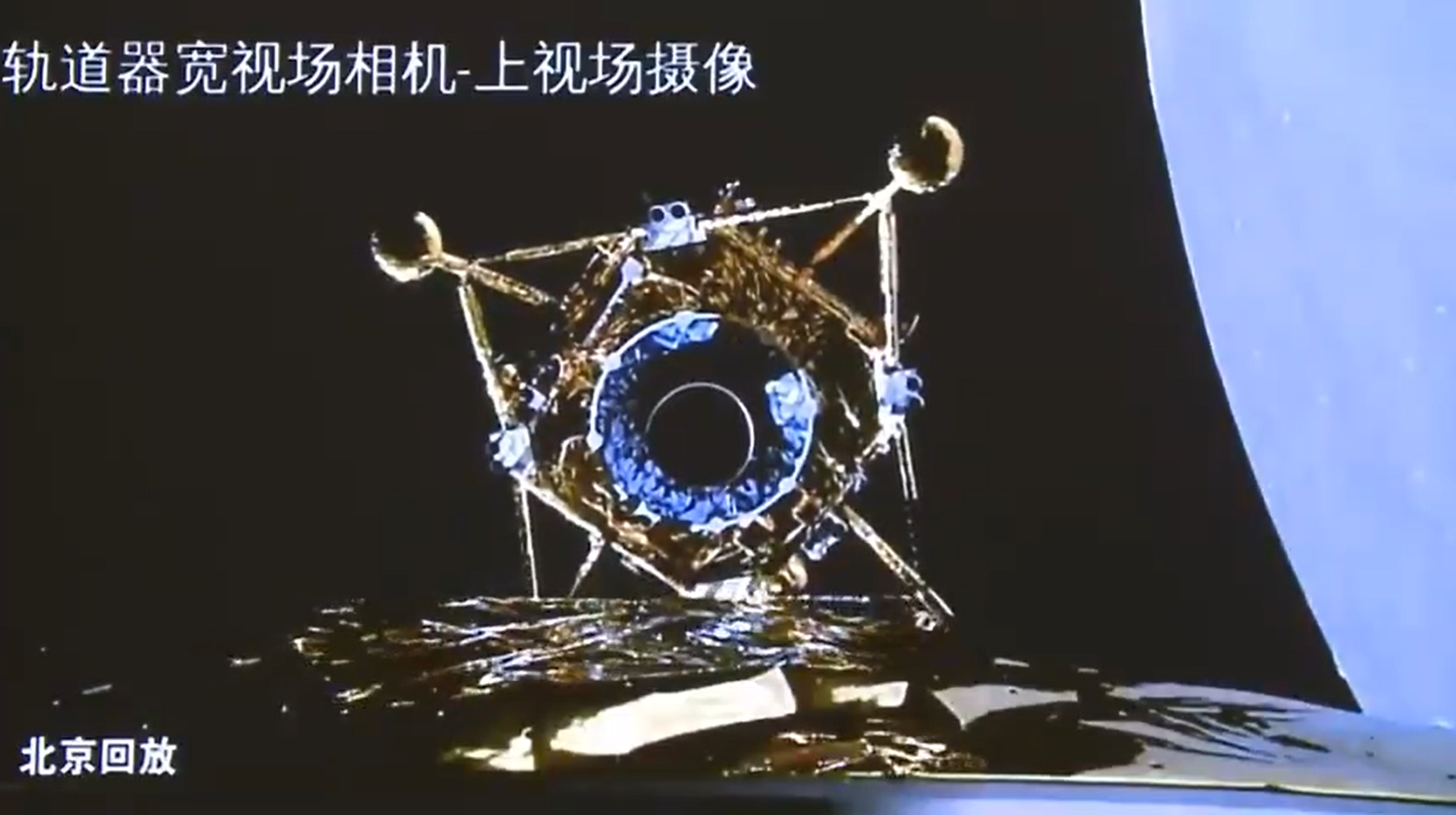
For SpaceUpClose.com & RocketSTEM
CAPE CANAVERAL, FL – Following a flawless launch on a Chinese heavy lift Long March 5 rocket on 23 November and a 112 hour translunar voyage the historic Change’5 moon mission who’s ambitious goal is to grab and return the first lunar soil and rock samples from Earths nearest neighbor in 4 decades achieved orbit around the Moon, Saturday, Nov. 28.
Monday, Nov. 30 (Beijing time) the lander-ascender combination separated from the orbiter – return combination mother ship in anticipation of the descent taking place as early as Tuesday, Dec. 1.
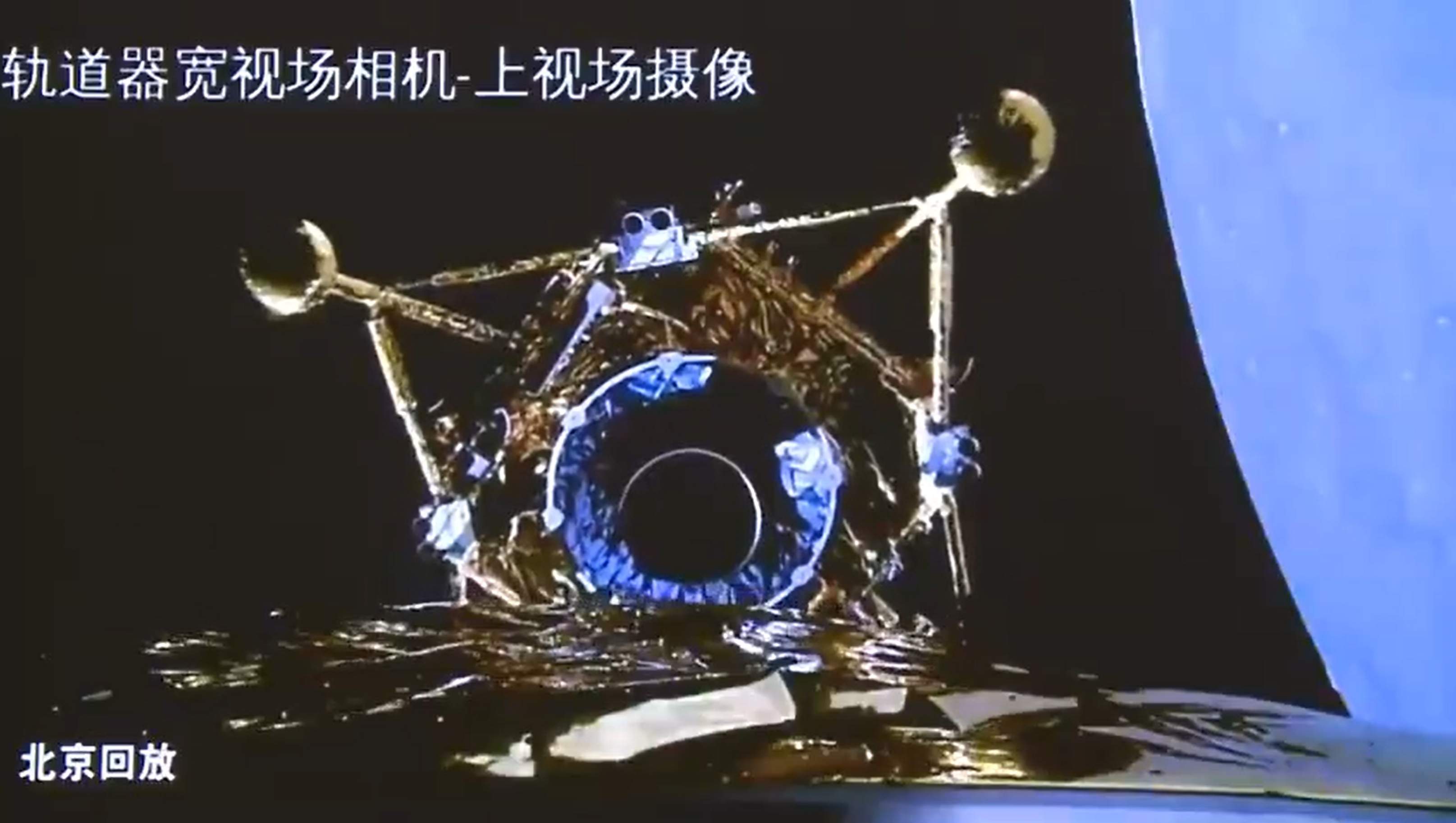
China’s Chang’e-5 probe is preparing for a soft landing on the moon to undertake the country’s first collection of samples from an extraterrestrial body, China’s official Xinhua news agency reported today .
The goal is to collect around 2 kilograms of more of pristine soil and rock regolith from the moons surface.
China is only the 3rd country to attempt a lunar sample return mission – following the United States and the then Soviet Union – now Russia, from Apollo manned and Luna unmanned missions in the 1960s and 1970s.
The Change’5 spacecraft fired its main engines twice for braking maneuvers to enter an initial elliptical lunar orbit and then circularize the orbit at about an 120-mile-high (200-kilometer) altitude prior to lander separation starting the descent phase to the surface.
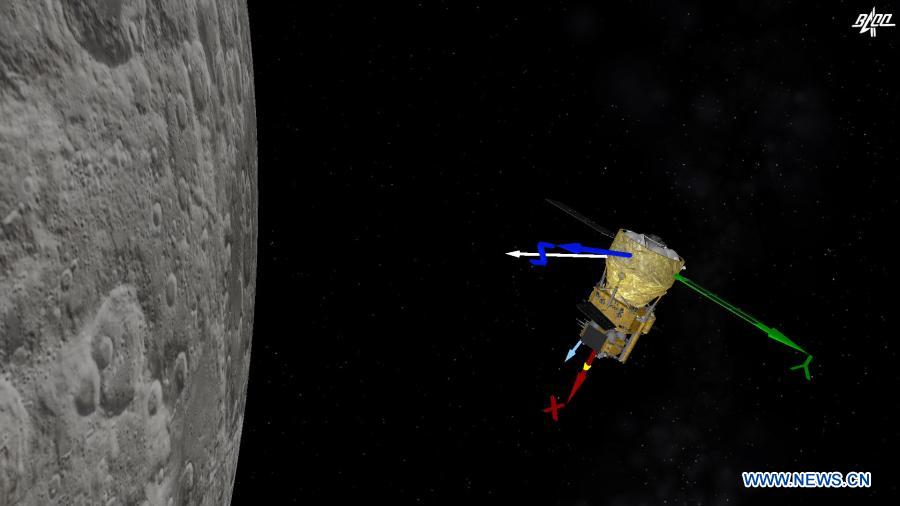
The initial main engine firing took place at 7:58 a.m. EST (1258 GMT) Sat. Nov. 28 at a distance of 400 km for a 17-minute burn to place the probe into an eight-hour elliptical orbit around the moon
“China’s Chang’e-5 probe performed braking for the second time at 20:23 p.m. Sunday (Beijing Time),” according to the China National Space Administration (CNSA).
“After the deceleration, the probe started flying in a near circular orbit from an elliptical path around the moon.”
Its two 150N engines were operational for about six seconds.
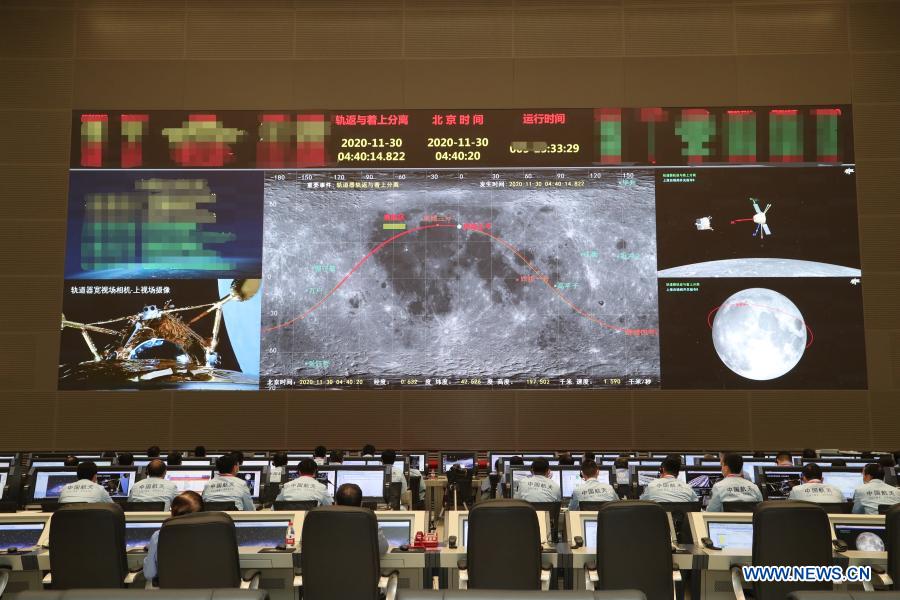
With the descent phase now in progress the “spacecraft is performing well and communication with ground control is normal,” CNSA said.
“The lander-ascender combination will execute a soft landing on the moon and carry out automatic sampling. The orbiter-returner will continue orbiting about 200 km above the lunar surface and wait for rendezvous and docking with the ascender.”
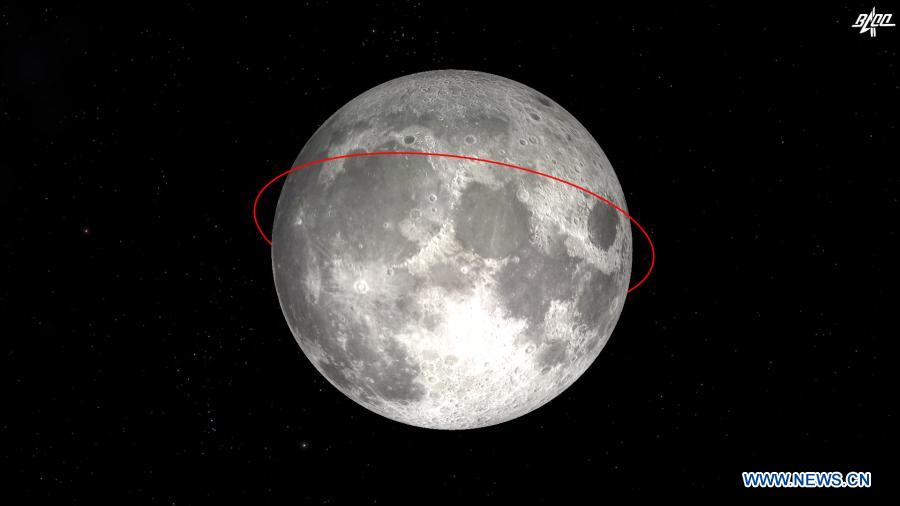
The lander-ascender combination of the spacecraft separated from its orbiter-returner combination at 4:40 a.m. Monday (Beijing Time), Nov. 30, 2020, 3:40 p.m. EST Nov. 29 (2040 GMT), according to the China National Space Administration.
This video tweet shows the spacecraft separation:
Separation between lander/ascent vehicle and orbiter/return vehicle of #Change5 on Lunar orbit. Video taken from the orbiter/return vehicle. pic.twitter.com/05Q4cfZKbT
— 星海 (@starmil_admin) November 30, 2020
The Change’5 mission began on Nov. 23 when the Long March 5 rocket successfully hurled the 8200 kg Change’5 moon mission on a fast paced 23 day long mission on China’s first ever mission to snatch lunar regolith from the Moon’s surface and send it back to eagerly awaiting scientists back on Earth landing in Inner Mongolia, China.
The Long March 5 carrier rocket lifted off at 3:30 p.m. EST (2030 GMT) Monday, Nov 23 (4:30 a.m. Nov. 24 Beijing Time) from the Wenchang Space Launch Center on Hainan Island, China on behalf of the Chinese National Space Administration (CNSA).
After blastoff on 2,4 million pounds of thrust from the Long March 5 rocket the 9 ton probe separated from the upper stage and deployed its solar arrays to begin a 112 hour voyage to the moon and enter orbit.
The mission goal is to land in the Mons Rümker, region of Oceanus Procellarum or Ocean of Storms (roughly 41-45 deg. N, 49-69 deg. W. – a smooth volcanic plane and the same region as NASA’s Apollo 12 manned moon landing n 1969
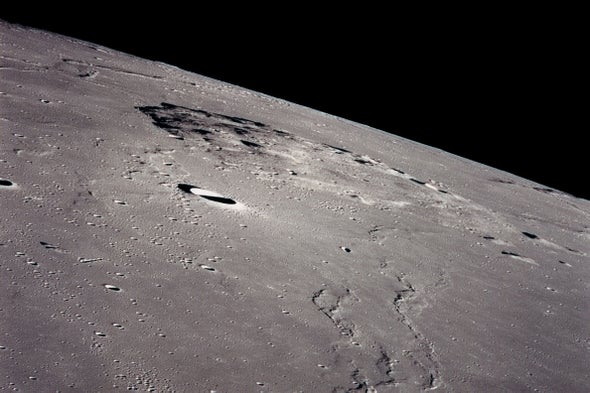
These would be the youngest samples retrieved from the Moon so far dating to roughly 1 billion years vs 3.1 to 4.4 billion years old for the Apollo samples.
Chang’e-5 mission is comprised of four components: an orbiter, a lander, an ascender, and an Earth return capsule.
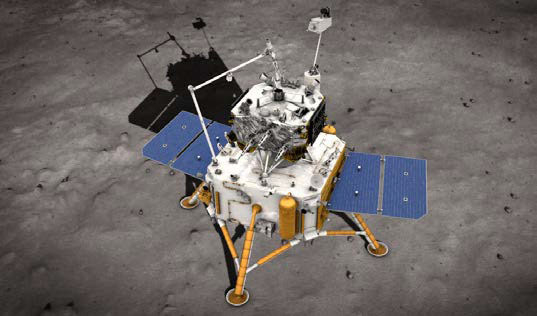
The solar powered Change’5 lander would operate for one lunar day (two weeks) and return a 2 to 4 kg sample of lunar regolith, possibly from as deep as 2 meters.
If all goes well the samples will be returned to Earth in the return capsule using an atmospheric “skip” reentry and a landing in the Siziwang Banner grassland of the autonomous region of Inner Mongolia in China.
Watch this excellent video from CGTN China State TV:
Video Caption: How does China’s Chang’e-5 lunar mission work, Credit: CGTN
The spacecraft carried out two planned orbital corrections during the four and a half day Earth-Moon transfer, achieving its expected goals, said China.
The most recent lunar sample return mission was accomplished by the Luna 24 spacecraft launched by the then Soviet Union in 1976.
To date lunar soil and rock samples were collected and returned from 6 NASA Apollo manned moon landings and 3 Russian Luna robotic missions
Chang’e 5 is equipped with a robotic arm with a sampling scoop, a coring drill, and a sample chamber that can return up to 4 kg of regolith. It also has a Panoramic Camera (PCAM), Lunar Regolith Penetrating Radar (LRPR), and a visible and near-infrared Lunar Mineralogical Spectrometer (LMS).
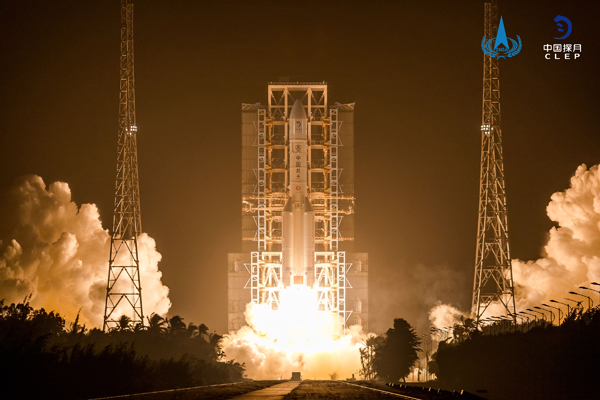
After it enters lunar orbit, the lander-ascender combination will separate from the orbiter-returner combination. The lander-ascender will touch down on the northwest region of the moon’s Oceanus Procellarum, collect samples from the lunar surface, as well as drill into the ground, according to China’s Xinhua news agency.
The mission team said the lander and ascender are waiting for a perfect timing for a soft landing, while the orbiter and returner will continue to fly around the moon and adjust to a designated orbit, getting ready for the docking with the ascender, reports CGTN China English Language TV.
“The landing operation is expected in three days. Once it touches down on the lunar surface, the lander will collect two kilograms of lunar samples.”
“It will shovel some surface material, drill a two-meter-deep hole and extract the soil from inside it, which will act as an archive of the moon, with the bottom recording information from a billion years ago, and the top more closely reflecting the present day.”
“Once the samples are secured, the ascender will take off from the lunar surface to transfer the moon samples to the re-entry capsule waiting in lunar orbit, which will then carry them back to earth.”
“The sampling work and the take-off of the ascender from the lunar surface need to be completed within 48 hours,” according to Liu Jiangang, chief of the command team in Beijing.
Chang’e-5 marks the next bold step in China three step lunar ambitions following on the Change’ 1 and 2 lunar orbiters and Change’ 3 and 4 landers and Yutu rovers on both the near and far side.
China became the first nation in history to land a robotic spacecraft on the far side of Earth’s Moon, when their robotic spacecraft named Chang’e 4 accomplished a soft touchdown Jan. 3, 2019 with the Yutu-2 moon rover.
The mosaic below by Ken Kremer and Marco Di Lorenzo shows the Yutu-1 moon rover at work on the lunar surface.

Earlier this year China has successfully launched its first fully indigenous mission to Mars – the extremely ambitious Tianwen-1 robotic mission designed to orbit, land and rove on the Red Planet – aimed at comprehensively investigating its climate, atmosphere and geology and search for signatures of water as well as snapping numerous images.
China utilized its most powerful rocket – the relatively new heavy-lift Long March 5 – to hurl the combination Tianwen-1 orbiter and lander mission to Mars.
The Chinese Tianwen-1 spacecraft lifted off atop the Long March 5 carrier rocket from the seaside Wenchang Space Launch Center in southern China’s Hainan province on July 23, at 12:41 a.m. EDT (0441 GMT; 12:41 p.m. Beijing time).
China eventually hopes to land the first Chinese people on the Moon at some point during the 2020s.
NASA seeks to return astronauts to the lunar surface under Project Artemis aiming to land the first woman and next man at the Moon’s South Pole by 2024.
Watch Ken’s continuing reports about Starlink, Crew Dragon, Commercial Crew and Artemis and onsite for live reporting of upcoming and recent SpaceX and ULA launches including Demo-2, Starlink, X-37B, Solar Orbiter, Mars 2020 and more at the Kennedy Space Center and Cape Canaveral Space Force Station.
Stay tuned here for Ken’s continuing Earth and Planetary science and human spaceflight news: www.kenkremer.com –www.spaceupclose.com – twitter @ken_kremer – email: ken at kenkremer.com
Dr. Kremer is a research scientist and journalist based in the KSC area, active in outreach and interviewed regularly on TV and radio about space topics.
………….
Ken’s photos are for sale and he is available for lectures and outreach events
Please consider supporting Ken’s work by donating at Patreon:
https://www.patreon.com/kenkremer

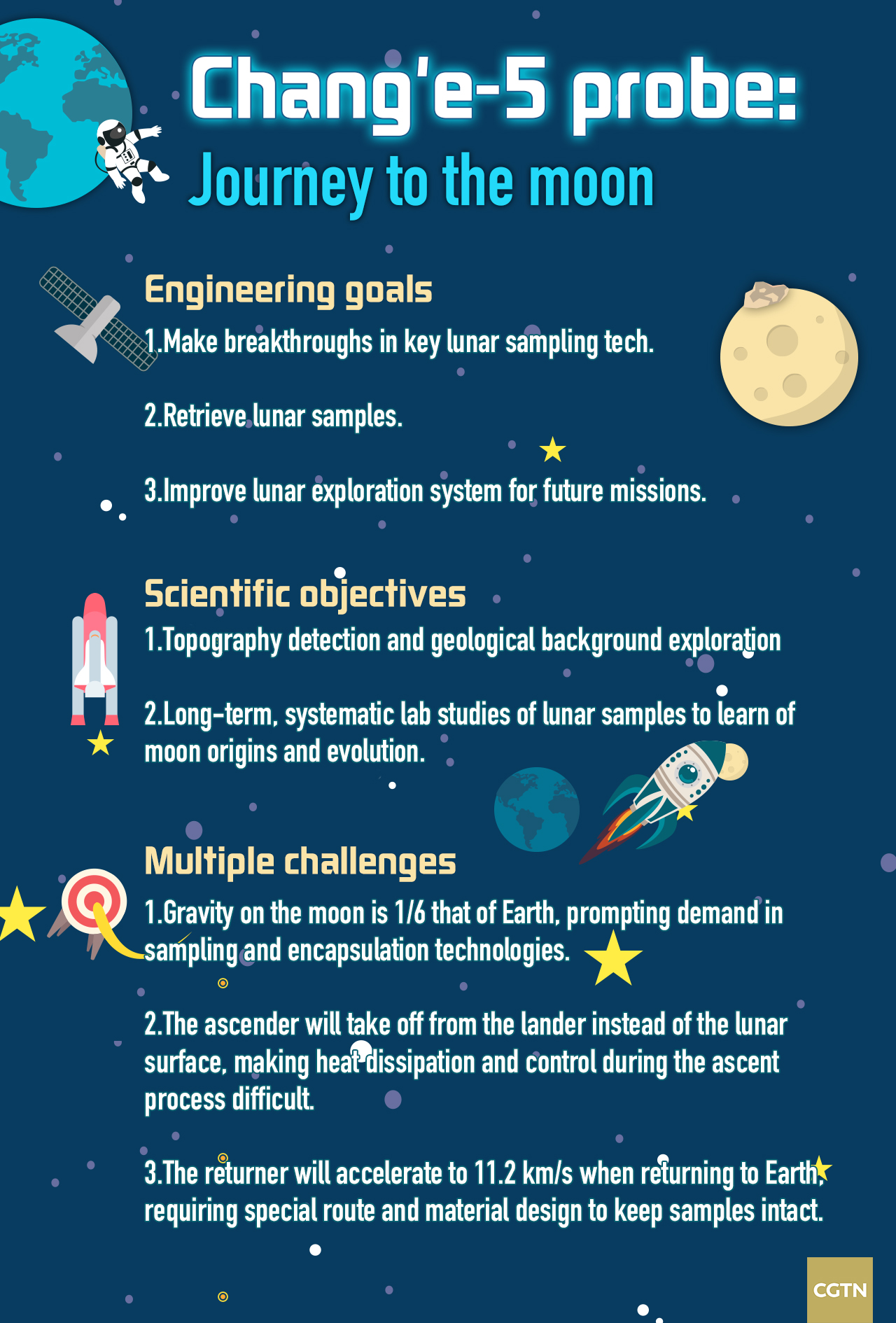
x



